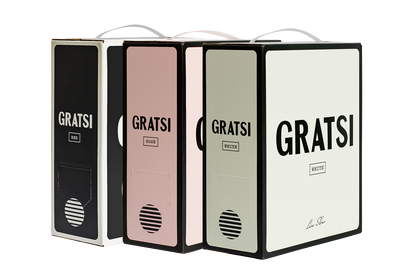Mamma Etna - Under the watch of Sicily's active volcano

It was a perfectly normal scene of small-town Sicilian life.
Mamma Etna - Under the watch of Sicily's active volcano
By Antonia Thomas
October 30, 2025
On an unassuming Monday morning in late September, I found myself in the unassuming Linguaglossa on Sicily. The town flanks the slopes of Mount Etna, the island’s active volcano not too far from the eastern coast. Life ticked by. A large pick up truck bearing stainless steel cylinders full of fresh milk was parked outside the tobacco shop. Its owner was stocking up on cigarettes; locals sauntered in and out of the cafe in the piazza downing a shot of espresso at the bar before getting on with the day; two elderly women sat nattering on a bench overlooked by the principal church. They paused their conversation when an even more elderly gentleman shuffled past them, greeting them as he walked. Nothing felt at odds. It was a perfectly normal scene of small-town Sicilian life.
If you didn’t know any better, you may be surprised to hear that one day earlier, Mount Etna had erupted just a few thousand feet up and away. The people of Linguaglossa don’t bat an eyelid. Quite the opposite. It’s not all that uncommon. Aside from a few inconveniences, in particular black cinders sprinkling the streets if the wind blows in their direction or Catania airport shutting for a day, the eruptions are welcomed. The ash fertilises the surrounding land adding rich nutrients to the crops which grow in abundance from the soil. Sicilians lovingly refer to the volcano as ‘Mamma Etna,’ standing watch over her people, nourishing and nurturing them. On this late September’s day, when the wine harvest was in full swing, it would soon be clear how beneficial Etna’s activity over the year will have been. Yields were anxiously being tested, tasted and trialled for the year’s vintage.


In recent decades, appreciation for Etna’s grapes has grown despite general consumption of wine being at an all time low. We are drinking one quarter less per capita than 20 years ago. Nevertheless there are pockets of terrain which continue to rise in popularity. We visited one vineyard which had been founded in 1997, one of the very first on Etna. They told us that now, almost 30 years later, there are 400 active wineries. No doubt the distinct minerality of the soil, the unique terroir, and the raw quality of the grapes attracts a clientele in search of modern, elegant alternatives. Winemakers enjoy Etna as an opportunity for a ‘blank canvas,’ moving away from areas that grip onto centuries’ old traditional methods. For that reason, the natural and raw wine movement goes hand in hand with production here. Low intervention maintains the purity of the grapes that have been so rigorously nurtured by human touch and by ‘idda’ (Sicilian dialect for ‘her,’ another loving reference to Etna).


Depending at what altitude you find yourself on Mount Etna, your immediate surroundings will differ vastly. As you ascend from the base by car, the natural landscape is fertile, luscious, and vegetated. Wine isn’t the only crop that is cultivated here. Olives, tomatoes, oranges, lemons, and nuts are just some of the produce that are also farmed. Slightly further up, you then find yourself in the depths of woodlands where oak and chestnut trees grow in density. At higher points, these are replaced with thickets of pine, silvery birch and looming beeches. Sometimes, you’ll see cows grazing as the summit smokes in the background. The closer you get to the peak, the blacker and more crater-like the land becomes, forged from thousands of years of lava flows. When you get out of the car, your feet crunch under the scatterings of pumice stones that are light as a feather and that can crumble to dust in your hands. You can sense Etna’s majesty. Naturally, temperatures go down as you go up. For an extremely short period each winter, Etna’s peaks are covered in enough snow to ski. There is one ski lift on the north slope which takes you to unbeatable pistes offering an experience like no other. Where else can you ski down an active volcano whilst also savouring views of the Mediterranean Sea along the not too distant horizon?


For all its vast and rugged terrain, you might also be surprised to hear that Etna has two quite different faces. There is a north/south divide. Generally speaking, its southern side - closer to Catania, east Sicily’s metropolitan hub - is quite built up with a degree of infrastructure and modernity that you wouldn’t instinctively expect. The area of Giarre at the volcano’s base is demarcated with a highway, various small but bustling towns, a monstrous cable car that promises an experience of the ‘real Etna’ (it doesn’t) and even a sizeable Macdonalds. The north on the other hand is wilder and less contaminated. Aside from perfectly asphalted roads which wind up the slope and a few charming towns like Linguaglossa, nature reigns supreme. Certainly, there are no fast food conglomerates defiling the landscape, nor (hopefully) will there ever be. Most of Etna is in fact a protected nature reserve, some of which falls under UNESCO’s tutelage.


At any time of the year, it is a humbling marvel to explore Mount Etna. Its impossible not to feel excited by the prospect of its ongoing activity. As we traversed it on that late September day, we hopped between multiple wineries each with different philosophies about what it meant to work and live on a volcano. One winemaker waxed lyrical on the fermentation process of his grapes that were currently stored in terracotta amphoras half submerged underground. ‘The grapes are alive,’ he exclaimed before whipping off the cover of one and thrusting his arm deep into the purple mass. When his now stained hand remerged, he pointed towards the amphora, inviting us to see for ourselves. Indeed, the thousands of grapes were fizzing and fussing as the sugars were breaking down, transfiguring the substance into something new. Though it would still be a long time before the finished product would be bottled up and ready for consumption. We stared into the amphora’s crater mesmerised by the movements. The summit of Etna couldn’t be all that different. Like the grapes from its grounds, its lava bubbles beneath the surface and every now and then, erupts with life.







